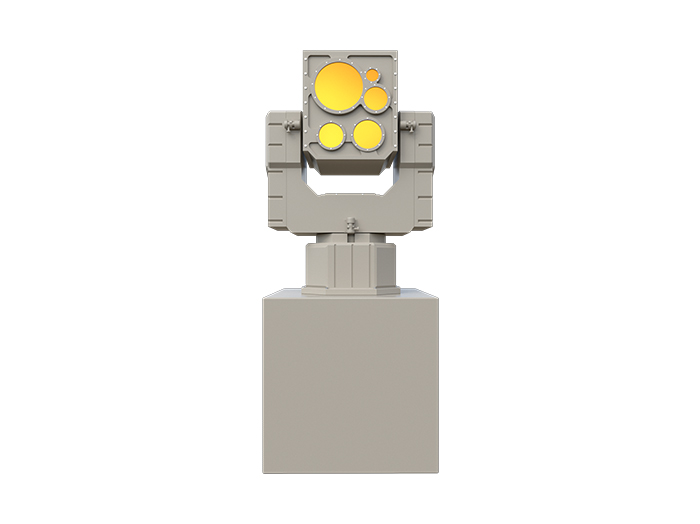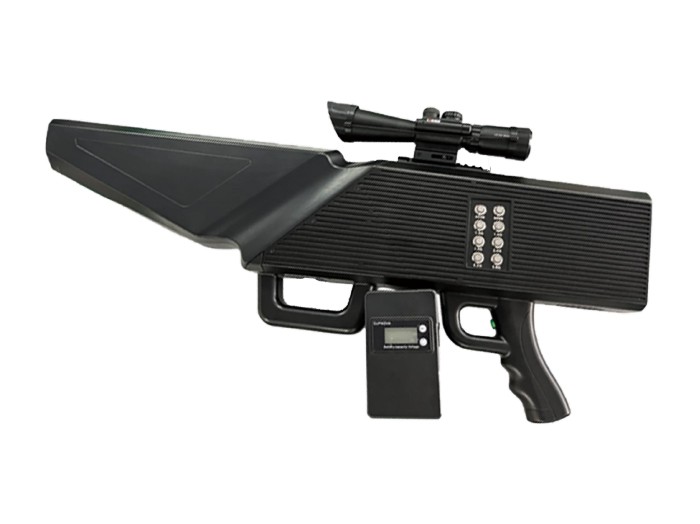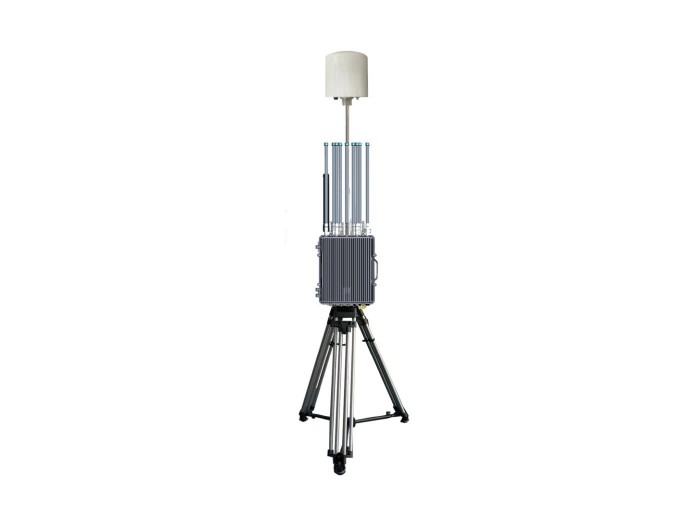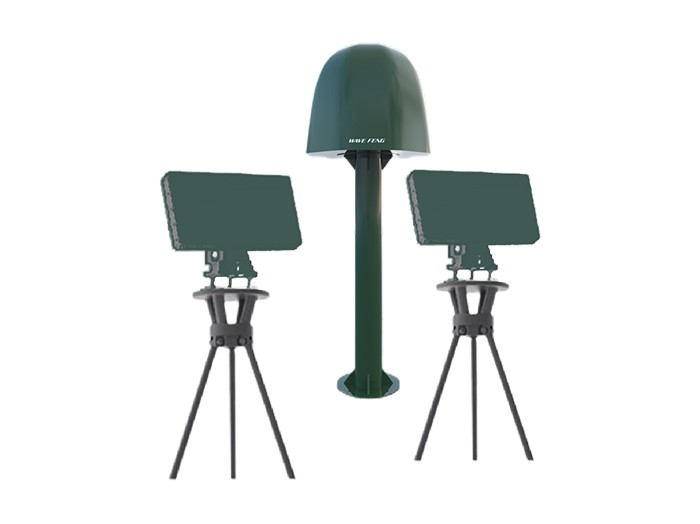RF UAV Detector 50mm: How to Detect and Secure Against Unauthorized Drones
With the rapid rise of unmanned aerial vehicles (UAVs) in commercial, recreational, and even nefarious applications, ensuring effective drone detection has become an industry priority. The RF UAV detector 50mm is emerging as a compact, reliable solution designed to identify radio frequency transmissions from unauthorized drones in real time. Whether you're responsible for securing critical infrastructure, event venues, or private estates, the challenge lies in spotting small, fast-moving drones before they become a threat. According to recent market research, the global drone detection system industry is expected to grow by 15% annually, highlighting increasing demand for advanced detection technologies like RF UAV detectors.
In this guide, we will explore what an RF UAV detector 50mm is, why its specialized size matters, how it works, and practical tips for optimizing your drone security strategy. If you’ve been asking, “How do I detect drones in restricted airspace efficiently?” or “What RF UAV detector system fits small-scale applications?”, you’re in the right place. Let’s dive into this evolving field and see how to harness RF detection technology to safeguard your assets.
What Is an RF UAV Detector 50mm? Understanding the Technology
An RF UAV detector 50mm refers to a radio frequency-based drone detection device with a compact sensor module approximately 50 millimeters in size. This size specification reflects the miniaturized antenna or sensor element used to capture the electromagnetic signals emitted from UAV control and communication links. Unlike larger radar or optical systems, an RF detector focuses on intercepting the drone’s control frequencies (commonly in 2.4 GHz and 5.8 GHz bands), making it cost-effective and energy-efficient for many applications.
The significance of this compact 50mm form factor is critical for users needing discreet or mobile deployment. For example, security teams at corporate campuses have used RF UAV detectors of 50mm size integrated into handheld or portable devices, achieving early drone warning without bulky installation. Furthermore, smaller antennas can be embedded into existing security infrastructure such as cameras or monitoring stations to enhance detection while maintaining a low profile.
Industry data shows that RF detection devices can identify drones at distances ranging from 300 meters to over 1 kilometer depending on environmental factors and antenna design. A 50mm antenna balances detection performance with portability, supporting scenarios where traditional stationary detectors may not be practical.
Benefits and Applications of RF UAV Detector 50mm Devices
The RF UAV detector 50mm is prized for its unique advantages across different sectors. Here are some of the key benefits:
- Compact and Portable: The small antenna size allows integration into handheld units or compact security platforms, giving operators flexibility to monitor multiple locations or quickly reposition the sensor as threats emerge.
- Wide Frequency Coverage: Covers common UAV control frequencies to reliably detect a broad range of commercial and hobby drones.
- Real-time Alerts: Enables instant notification when drone signals are detected, facilitating rapid response.
- Low Power Consumption: Smaller RF modules typically consume less energy, which is ideal for battery-powered or remote setups.
Applications for these devices span critical infrastructure protection, event security, border and military surveillance, and even privacy enforcement in restricted airspace. For instance, airports employ RF UAV detectors to avert drone intrusion risks around runways, while private companies use them to protect intellectual property or mitigate espionage threats.
A practical scenario involves a security guard equipped with a portable 50mm RF UAV detector scanning outdoor events. Upon receiving a detection alert, the guard can swiftly locate the drone, enabling immediate countermeasures and preventing potential safety hazards.
How to Set Up and Effectively Use an RF UAV Detector 50mm System
Maximizing the effectiveness of a 50mm RF UAV detector requires careful installation and operational strategy. Here’s a step-by-step overview:
- Site Assessment: Identify drone threat vectors and preferred flight paths around your property. Understanding these patterns informs optimal placement of detectors.
- Strategic Installation: Mount the 50mm RF antenna at elevated points with a clear line of sight to the anticipated drone approach angles. Avoid obstacles like dense foliage or metal structures that might degrade signal reception.
- Calibration and Testing: Configure the system to recognize legitimate drone frequencies and set sensitivity thresholds to minimize false positives from other RF sources.
- Integration with Security Systems: Connect the RF detector to existing security infrastructure like cameras, alarms, or command centers to enable coordinated drone countermeasures.
- Training Personnel: Ensure staff understands detector alerts and response protocols, enabling swift identification and neutralization of drone threats.

Additionally, continuous system updates may be necessary to adapt to emerging UAV communication technologies. Many manufacturers offer software upgrades to enhance detection accuracy and introduce new functionality such as drone classification and tracking.
Want to learn more? Visit our website for detailed setup tutorials and expert consultation.
Emerging Trends in RF UAV Detection Technology
The market for RF UAV detectors is experiencing dynamic innovation fueled by evolving drone technology and growing regulatory demands. Recent trends include:
- Improved Miniaturization: Beyond 50mm sensors, manufacturers are developing even smaller, multi-band antennas that fit into wearable devices and unmanned ground sensors.
- Artificial Intelligence Integration: AI algorithms increasingly assist in discriminating between friendly and hostile drones by analyzing signal patterns and movement behavior.
- Hybrid Detection Systems: Combinations of RF, radar, acoustic, and optical detection create more comprehensive drone monitoring solutions tailored for complex operational environments.
- Enhanced Countermeasures: Coupling RF detection with jamming or drone capture technologies improves the overall drone defense posture.
Data from a 2023 industry survey showed that 78% of security professionals plan to adopt hybrid drone detection systems within the next five years, a trend that underscores the importance of adaptable RF UAV detectors like the 50mm model.
Have a similar question about drone detection systems? Contact us for professional advice and customized security solutions.
Key Takeaways and Recommendations for Choosing an RF UAV Detector 50mm
- Assess Your Security Needs: Understand your operational environment and drone threats before selecting a detector size and model.
- Leverage Portability: Use the 50mm RF UAV detector’s compactness for flexible deployment, especially where mobility or concealment is critical.
- Integrate Systems: Combine RF detection with existing monitoring tools to enhance situational awareness and response time.
- Stay Updated: Opt for detectors with software upgrade capabilities to keep pace with evolving UAV technologies.
- Consult Experts: Contact professional consultants to design the most effective drone detection strategy tailored to your facility’s needs.
Conclusion: Secure Your Airspace with RF UAV Detector 50mm Solutions
As drone usage continues to expand, so does the need for reliable, effective drone detection systems. The RF UAV detector 50mm stands out as a powerful yet compact option that balances performance with practical deployment advantages. By understanding how RF technology works, where to apply it, and what future trends to anticipate, you can proactively protect your assets from unauthorized UAV incursions.
Ready to enhance your drone defense system? Visit our website now to explore a range of RF UAV detectors with 50mm sensors and get expert guidance tailored to your security needs. Secure your airspace today and stay one step ahead of drone threats!

















